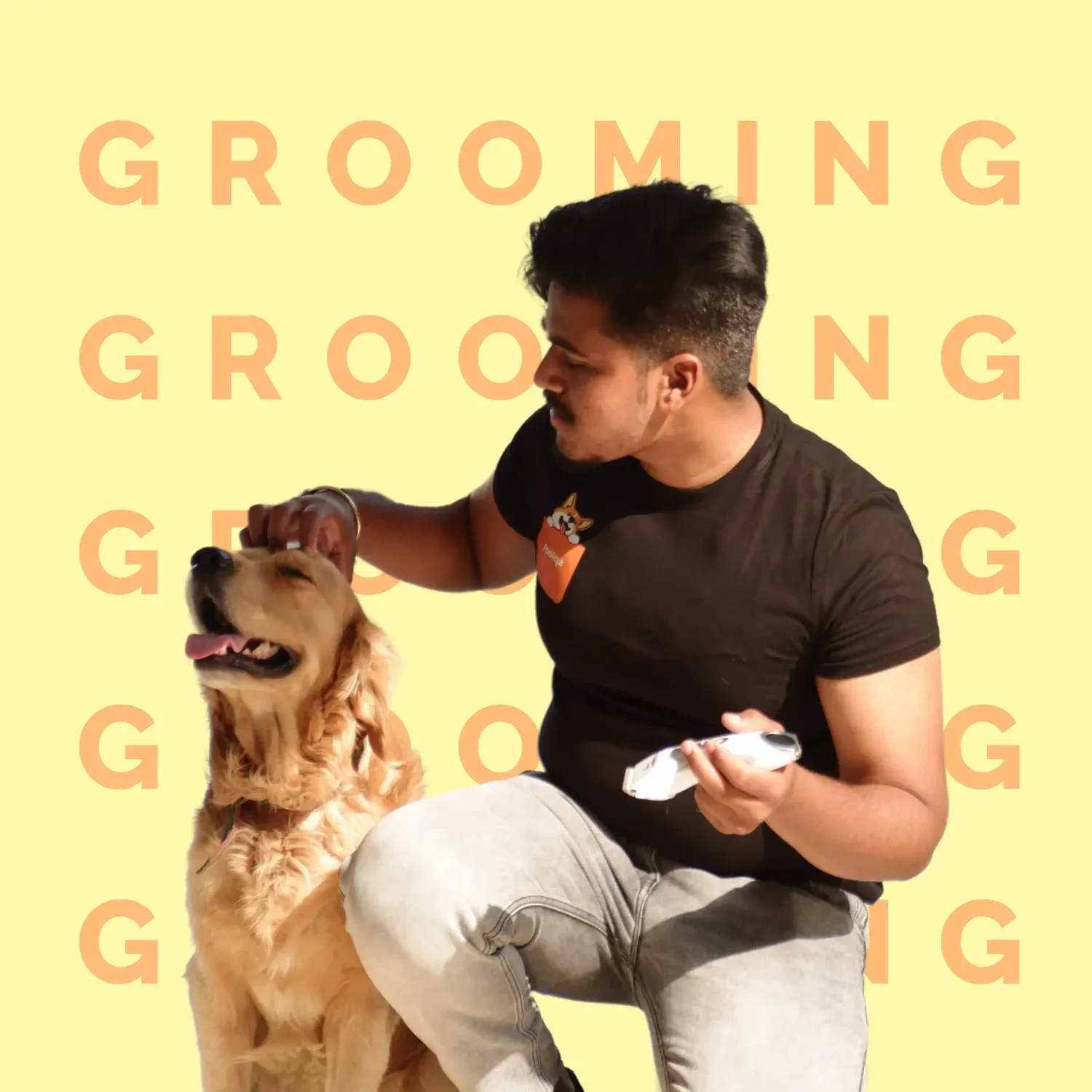How to Bathe a Dog That Hates Water? Tips and Tricks
{"isSaved":["66e33b6e494d7cc532cd339b"],"isRead":["6750748d3bb56094062c7f54","6770315dba545653ef94a44d","6770ab28ba545653ef966ebd","67725e17ba545653efa22316","67727998ba545653efa2f4ac","6773ac8eba545653efa9cdac","6774ea3dba545653efb26c05","67755906ba545653efb6044e","67765b23ba545653efbc679c"]}

Bathing a dog that hates water can be challenging, but understanding their aversion is the first step. Dogs may dislike baths due to past negative experiences, fear of slipping, discomfort with water temperature or pressure, or simply sensory overload. As a caring pet parent, you have to recognize what triggers your pet. Only this way, you’ll be able to make baths a more positive and calming experience for them.
Addressing your dog's fear of bathing or introducing some calm bathing techniques can make at-home grooming a relaxing and enjoyable experience for both you and your furry friend. Let’s learn more about it!
How to Bathe a Dog That Hates Water?
If your dog is afraid of water, bath time can become a stressful ordeal. However, with the right game plan, you can ease their anxiety and make the process more fun and comfortable. Here are some effective tips to help your dog feel relaxed during bath time at home.
Cautions and Considerations During Bath Time
Avoid forcing your dog into the water, as this can intensify their fear and anxiety. Always check the water temperature to make sure it’s lukewarm and comfortable, preventing discomfort or stress.
Use vet-recommended shampoos, particularly if your dog has sensitive skin, to ensure their coat and skin are cared for gently and safely.
Prepping Your Dog for Bath Time
Preparing your dog for bath time is important to make it a stress-free experience. Start early by introducing your puppy to water and grooming tools to build familiarity and reduce fear.
For older dogs, begin desensitizing them to water and bathing tools well before the bath. Use positive reinforcement, like treats, toys, and praise, to create a friendly association. Gradually introduce the bathroom or bathing area as a safe, non-threatening space.
Always brush your dog beforehand to remove loose fur and tangles as this practice makes the bath session more comfortable. Patience and preparation go a long way in making bath time enjoyable.
Pro Tips
Bath time gets easier with these pro tips: use a handheld sprayer or small cup for controlled water application and protect sensitive areas like ears and eyes with cotton balls or tear-free shampoo.
Non-slip mats are necessary for their safety. For large dogs, consider bathing in a spacious area like a garden using a gentle shower head or bucket, and enlist help for better control.
Sploot’s professional dog bathing and grooming services are a great option for stress-free, expert care. Regularly check water temperature, use calming tones, and reward your dog with treats to make baths fun for them.
Tricks and Suggestions
Involve the whole family, if possible, to create a jolly and relaxed atmosphere. Use distractions like chew toys or lick mats to keep your dog engaged during the bath.
Spread peanut butter or dog-safe treats on the bathroom wall to redirect their focus. Always reward your dog post-bath with their favorite treat to build positive associations.
Additionally, try calming sprays or gentle music to ease anxiety, and use a towel warmed in the dryer to wrap them after the bath for extra comfort. Small gestures like these can transform bath time into a stress-free experience!
Bathing Alternatives for Dogs Having Fear of Bathing
For dogs with a fear of bathing, alternatives like dry shampoo, grooming wipes, and waterless sprays can help maintain hygiene without the stress of a traditional dog bath. These options are convenient and gentle, making them ideal for water-averse pups.
Professional grooming service is also a stress-free solution, using safe techniques and products to ensure a clean and comfortable experience. Whether at home or with experts, keeping your dog clean doesn't have to involve water.
Regular Dog Grooming: Why it Matters
Regular dog grooming is essential for maintaining your pet’s overall health and hygiene. Grooming reduces the need for frequent dog baths, making the process less stressful for your pup. It keeps their coat healthy by removing dirt, tangles, and loose fur, which minimizes shedding.
Moreover, grooming promotes better hygiene, preventing skin issues and infections. So a consistent grooming routine is simply a must for your dog to stay clean, comfortable, and happy!
Summary
Helping dogs overcome their fear of water requires patience and consistency. Start slowly, introducing water gradually with positive reinforcement, like treats and praise, to make the experience enjoyable. Always go at your dog's pace, and avoid forcing them into water.
For a stress-free bath experience, consider professional grooming services like Sploot, which provides gentle care and safe products tailored to your pet’s needs.
Connect with sploot for AMA sessions, Pup Talks, events, and more, or follow us on Instagram for tips and updates!
FAQs on How to Bathe a Dog That Hates Water
How to train your dog to love baths?
Start by gradually introducing your dog to the bath area with positive reinforcement like treats and praise. Make baths a calm and enjoyable experience with warm water and gentle handling.
How do you bathe an unwilling dog?
Keep bath time short and positive, using treats to reward calm behavior. Gently hold the dog and avoid forcing them into the water, letting them adjust at their own pace.
How to bathe a dog that is terrified of water?
Introduce water slowly with a damp cloth or sponge, avoiding full immersion initially. Use treats, praise, and a calm voice to reassure your dog throughout the process.
How to bathe a dog without water if it fears baths entirely?
Try using waterless dog shampoo or wipes to clean your dog. Gently rub the product into their coat and ensure they are comfortable with the process.
Is bathing a dog with sensitive skin and fear of bathing easily possible?
Yes, with the right products, like hypoallergenic shampoos, and a calm approach. Keep baths short, lukewarm, and use treats to make the experience more positive.
How to bathe a dog that hates water using treats and toys?
Create a calm environment and use toys or treats to distract and reward your dog. Gradually introduce water, ensuring the experience is positive with plenty of praise.
